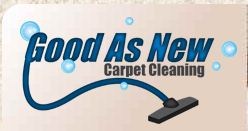
Get matched with top lawn fertilization and treatment specialists in Hokah, MN
Enter your ZIP and get matched with up to 5 pros
Need a pro for your lawn fertilization and treatment project in Hokah, MN?
Verified Reviews for Lawn Fertilization And Treatment pros in Hokah, MN
*The Angi rating for Lawn Fertilization And Treatment companies in Hokah, MN is a rating based on verified reviews from our community of homeowners who have used these pros to meet their Lawn Fertilization And Treatment needs.
*The HomeAdvisor rating for Lawn Fertilization And Treatment companies in Hokah, MN is a rating based on verified reviews from our community of homeowners who have used these pros to meet their Lawn Fertilization And Treatment needs.
Last update on November 20, 2025
Find Lawn fertilization and treatment specialists in Hokah
Absolute Home Services
Absolute Home Services
Complete Home Remodeling, Repair, & Maintenance. Commercial & Residentail *Check Us Out On Facebook*
Complete Home Remodeling, Repair, & Maintenance. Commercial & Residentail *Check Us Out On Facebook*
The Hokah, MN homeowners’ guide to lawn fertilization and treatments
From average costs to expert advice, get all the answers you need to get your job done.
 •
•Discover average lawn aeration cost, key price factors, and tips to save. Get a clear estimate for your yard and learn how to choose between DIY and hiring a pro.
 •
•Get transparent power seeding cost info to learn what impacts pricing, how to save, and whether to DIY or hire a pro for your lawn’s best results.
 •
•Discover average hydroseeding cost, key price factors, and ways to save. Get transparent estimates for your lawn project and make informed decisions for your home.

Brown patches on your lawn may occur for several reasons, including lack of sunlight and overfertilization. Learn how to treat and prevent patches.

Grass seeds thrive in soil rich in nutrients, but a potting mix will not support your grass’ long-term health. Find out which type of soil is best for grass.

If you’re looking to apply fertilizer to your lawn, there are a few things you need to get right first. Make sure you’re ready to answer these lawn fertilizer questions before you start.
- La Crescent, MN Lawn fertilization and treatment specialists
- La Crosse, WI Lawn fertilization and treatment specialists
- Stoddard, WI Lawn fertilization and treatment specialists
- Onalaska, WI Lawn fertilization and treatment specialists
- Holmen, WI Lawn fertilization and treatment specialists
- Genoa, WI Lawn fertilization and treatment specialists
- West Salem, WI Lawn fertilization and treatment specialists
- Trempealeau, WI Lawn fertilization and treatment specialists
- Coon Valley, WI Lawn fertilization and treatment specialists
- Spring Grove, MN Lawn fertilization and treatment specialists
- De Soto, WI Lawn fertilization and treatment specialists
- Rushford, MN Lawn fertilization and treatment specialists
- Bangor, WI Lawn fertilization and treatment specialists
- Galesville, WI Lawn fertilization and treatment specialists
- Rushford Village, MN Lawn fertilization and treatment specialists
- Rockland, WI Lawn fertilization and treatment specialists
- Goodview, MN Lawn fertilization and treatment specialists
- Westby, WI Lawn fertilization and treatment specialists
- Winona, MN Lawn fertilization and treatment specialists
- Viroqua, WI Lawn fertilization and treatment specialists
- Stockton, MN Lawn fertilization and treatment specialists
- Lansing, IA Lawn fertilization and treatment specialists
- Cashton, WI Lawn fertilization and treatment specialists
- Ettrick, WI Lawn fertilization and treatment specialists
- Minnesota City, MN Lawn fertilization and treatment specialists
- Sparta, WI Lawn fertilization and treatment specialists
- Lewiston, MN Lawn fertilization and treatment specialists




